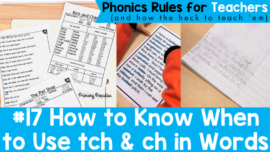Writing is important because it gives us the means to express ourselves. Parents often want to encourage their children to write, but aren’t sure how to help. Here are 6 ways parents can support their child’s writing development as well as a free printable support guide you can send home to parents.
Why do parents need support?
Parents often want to help, but aren’t sure where to start. I’ve shared how to help students support their children in reading and math, so today, let’s focus on how to help children write. Here are seven simple ways parents can encourage their students to write at home. I’ve also included a free printable parent guide you can send home to parents at the bottom of the post.
7 Ways Parents Can Support Their Children as Writers
Use a journal or diary
Giving children a journal or a diary is a great way to help them get excited about writing. It doesn’t have to be anything fancy either! You can give them a regular notebook from the dollar store. If you want to make it even more exciting, let the child decorate it with markers or stickers. Give the child the opportunity to write in it often. It’s okay if they use it to draw or only write a few words and sentences. It’s a great way to give students a change to express themselves, write about their day, and get their feelings out. If you want to make it even more effective, you could journal in your own notebook at the same time.
Let them help make lists
Writing isn’t just about writing stories and longer pieces. Writing is often functional such as making lists. A great way to encourage your child to write is to let them help you. The next time you need to make a grocery list, let them help you. You can have them write some of the words or all of the words. If they only know some letters, they could write those letters every time you need to. So, if they know A, they can write the a in apples and beans. If the child isn’t writing yet, they could draw pictures for some of the things on the list. While it might make the list writing take longer, children will love to feel involved and included, and it will show them the importance of writing in a real world setting.
Write notes to each other
Who doesn’t love to receive a special note? A fun and simple way to encourage children to write at home is for parents to write notes back and forth with their child. You can tape a note to their bedroom door, put it in their lunchbox, or even use an old tissue box to make a family mailbox. If they want to make it even more exciting, they can put their note in an envelope. Encourage the child to write a note or picture back. Not only will it make them feel special, but it will encourage them to write themselves.
Let them see you writing
Child mimic what they see, so it’s really helpful for children to see their parents writing. Anytime you’re writing, whether it’s writing an email, paying bills, or filling out your planner, invite your child to join you. They don’t need to be involved in the writing, but seeing you write will show them that it’s something adults do.
Add writing to playtime
One of the easiest ways to encourage children to write is to add writing to playtime. Are you playing doctor? Make a doctor’s office sign with your child. If you’re playing restaurant, you can work together to make a menu. Doing this makes writing fun, and eventually, the child might start incorporating writing into playtime on their own.
Ask family members to write letters
Although we can communicate quickly and easily through text and email, there’s something magical about receiving a letter in the mail. Parents can encourage students to write by asking friends and family members to send their child letters periodically. When they receive a letter, the child can write back. Again, this is a real world way to show the importance of writing.
Write then type
Texting and email are a great way to communicate, but young children also need to practice writing by hand. A great way to combine both is this. If a child wants to send a text or email to a family member or a friend, have them first write it by hand, and then let them type it. This works well because it gives them a chance to practice writing by hand, and they get the instant gratification of sending an instant message.
A Few Things to Keep in Mind
Parents can sometimes have unrealistic writing expectations, so here are some important things to keep in mind.
- All writing is valuable.
- It’s okay if words are spelled incorrectly. “Inventive spelling” or spelling by sound is normal.
- If students aren’t in the mood to write, it’s not worth forcing it.
- Keep it fun and light so students associate writing with positive feelings.
- There’s no “better” type of writing. If students only want to write lists, that’s okay.
- Writing takes a lot of work, so it might take time to see improvement.
- Pick a time when the student is fresh and not stressed.
If you’d like to share these tips with your students’ parents, you can download this free Parent’s Guide to Supporting Student Writing printable in my free resource library for email subscribers. Click the picture below to access it. Not an email subscriber? Sign up here for immediate access.

Keep reading and learning about how to support parents:
- Free Reading Guide for Parents
- Free Math Guide for Parents
- Free Phonics Guide for Parents
- Free Science Guide for Parents
- What to Include in a Parent Newsletter
- Top 5 Ways to Send a Parent Newsletter
- Help Parents Understand Why Some History is History




